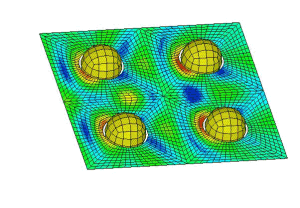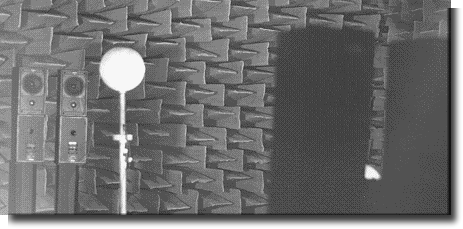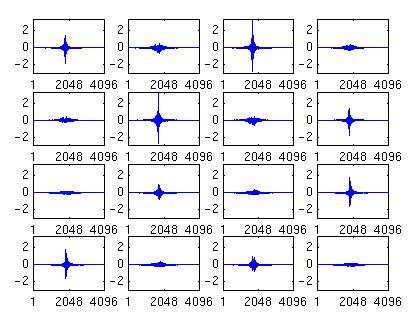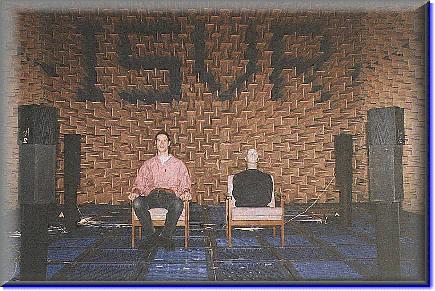|
| |
Multi-Channel Systems
|
One of the main limitations of
production of virtual acoustic images through loudspeakers is the restriction
on the listener to sit in a relatively narrow "sweet-spot". In
addition, all binaural systems implemented so far have in practice produced
virtual sources for only a single listener at a time. The following two
examples demonstrate different virtual sound imaging systems that generalise
the cross-talk cancellation from a 2x2 system to a 4x4 system. |
 |
|

. |
|
"Four-Ear" Dummy-Head (two SD
configuration)
A
new recording technique based on multi-channel digital signal processing
is investigated. The system uses a dummy-head that is modelled as a rigid
sphere with two pairs of microphones being mounted on opposite sides in
the horizontal plane. It is well known “phenomenon that listeners have
front-back confusion” when localising virtual acoustic images produced
by either headphones or loudspeakers. Reproduction with two loudspeakers
to the front of the listener causes rear virtual sounds to be perceived
primarily at ‘mirrored’ angles in the frontal hemisphere. The acoustic
signals which are recorded at the microphones are filtered by a 4x4 matrix
of digital filters before being transmitted via four loudspeakers. Subjective
measurements showed that the system can deal successfully with the problem
of reversals, thus reproducing the original recorded signals all around
a single listener (360 deg.) in an anechoic environment. The system is
also robust with respect to head movements - the virtual images do not
disappear when the listeners rotate their heads. The principle also works
efficiently when synthesising virtual sounds from a monophonic source (and
using a more realistic HRTF data-base of a dummy-head) |
Digital Filter Design
Various methods for inverse filter
design for sound reproduction have been suggested in our group, both in
the time and frequency domains. These include methods for designing adaptive
FIR filters using sparse update algorithms and a method of fast deconvolution
using regularisation.This method is based on
calculating the matrix of causal inverse FIR (finite impulse response)
filters in the frequency domain. The calculation is undertaken using regularisation,
where the performance of the filters is optimised at a large number of
discrete frequencies. Its main advantage is calculating off-line very long
filters (up to the DSP hardware limitations: 16384 coefficients of each
filter) at relatively large speeds (up to a few minutes with Matlab on
a SGI workstation). The figure shows a matrix of 4x4 inverse filters which
were delayed with 2048 samples, to include all the minimum phase components.
The long filters are also due to the delays of the asymmetric system (see
example below). |
|
 |
|
Multiple listeners
Binaural
systems have thus far been able to produce convincing virtual acoustic
images through loudspeakers for single listeners. A more difficult task
is to produce these desired signals for multiple listeners simultaneously.
By extending the previous case, where the four microphones are positioned
in a single head (sphere), each pair is now positioned at the ears of each
listener. The multi-channel solution can ensure that the sound pressures
at the ear drums of each listener will be similar to the desired pressures.
As a result, it is possible (with the use of an advanced multi-channel
DSP system) to control the 16 electro-acoustic paths and produce either
the same or different virtual sound images for each listener, simultaneously.
Current research is aimed at adapting the system to a more realistic environment,
such as a car, and tackling the problem of front back confusion. |
|

|
Up
|

